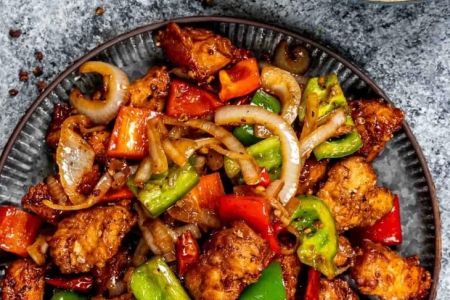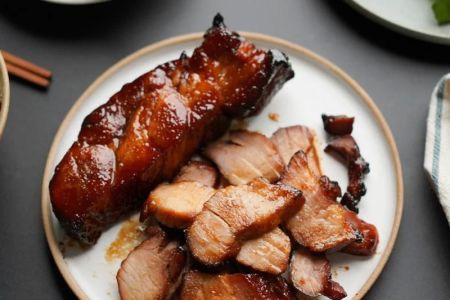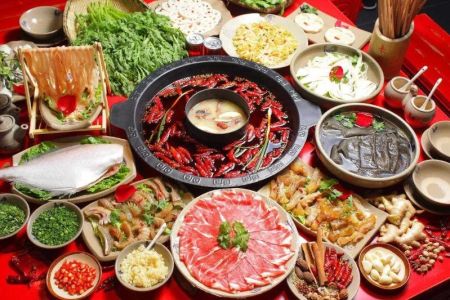The Best Chinese Food for Someone with Food Allergies: Safe and Delicious Options
- 1. Understanding Food Allergies in Chinese Cuisine
- 2. Safe Chinese Food Options for Allergy Sufferers
- 3. How to Communicate Allergies to Chinese Restaurants
- 4. Specific Dishes to Avoid and Suggested Alternatives
- 5. Best Chinese Restaurants for Allergy-Friendly Options
- 6. Final Tips for Allergy-Safe Chinese Dining
1. Understanding Food Allergies in Chinese Cuisine
When it comes to Chinese food, the wide variety of ingredients and preparation methods can pose challenges for individuals with food allergies. Chinese cuisine often uses ingredients like soy, peanuts, shellfish, and sesame oil, which are common allergens. Understanding the ingredients and how dishes are prepared is crucial for anyone who has specific food allergies.
Food allergies can range from mild reactions to severe anaphylactic shocks, so it’s important to be vigilant about which ingredients are in each dish. Some allergies, like those to gluten or dairy, may be easier to navigate, while others, such as shellfish or peanuts, require extra precautions.
2. Safe Chinese Food Options for Allergy Sufferers
For those with food allergies, it’s possible to enjoy Chinese cuisine without fear. Here are some safe options:
- Steamed Dishes: Steamed fish, dumplings (made without soy or shellfish), and vegetable-based dishes are often safe options.
- Rice and Noodles: Plain rice and certain types of noodles (like chow fun) can be allergen-free if prepared without soy sauce or other allergens.
- Grilled Meats: Grilled or stir-fried meats without heavy sauces are another safe choice. Always ask the chef to hold the soy sauce and check for gluten-containing ingredients.
It’s important to always check with the restaurant about their preparation methods to ensure the dishes are free from hidden allergens.
3. How to Communicate Allergies to Chinese Restaurants
Communication is key when dining out with food allergies. Here are some tips for effectively communicating your needs to Chinese restaurants:
- Learn the Language: If possible, learn key phrases in Chinese related to allergies. For example, you could say "I am allergic to peanuts" or "Does this contain soy?"
- Use Allergy Cards: If you're traveling or unfamiliar with the language, bring an allergy card that details your specific allergies. This can be shown to the restaurant staff to avoid confusion.
- Ask About Cross-Contamination: Ensure that the restaurant uses separate utensils and cooking equipment to avoid cross-contamination with allergens.
4. Specific Dishes to Avoid and Suggested Alternatives
There are some dishes in Chinese cuisine that are known for containing common allergens. Here are some to avoid, along with suggested alternatives:
- Avoid: Sweet and sour chicken, as it often contains soy, gluten, and sometimes peanuts.
Alternative: Opt for steamed fish with vegetables. - Avoid: Spring rolls or egg rolls, as they can be made with peanuts or soy.
Alternative: Choose steamed dumplings (without soy sauce). - Avoid: Pad Thai or other noodle dishes made with shrimp or peanuts.
Alternative: Stir-fried vegetables or plain noodles with a simple broth.
5. Best Chinese Restaurants for Allergy-Friendly Options
Finding Chinese restaurants that are sensitive to food allergies can make dining out a much safer and more enjoyable experience. Some restaurants have developed allergy-friendly menus, which provide a clear breakdown of ingredients used in their dishes. Look for restaurants that:
- Offer a variety of allergy-free menu options.
- Allow for customization to avoid allergens.
- Have staff trained in food allergy management.
Additionally, restaurants that focus on fresh, traditional dishes with fewer processed ingredients tend to be safer for allergy sufferers.
6. Final Tips for Allergy-Safe Chinese Dining
To enjoy Chinese food safely with food allergies, always be proactive:
- Always double-check ingredient lists and preparation methods.
- Use the tips provided above to communicate your allergies effectively.
- Consider eating at restaurants that specialize in allergy-friendly food.
By following these steps, you can ensure a delicious and safe dining experience, making Chinese food an enjoyable option even for those with food allergies.






![Top Chinese Restaurants for Authentic Cantonese Cuisine in [Your City]](https://img.gochinarose.com/d33/2507/4157910400_450x300.webp)
